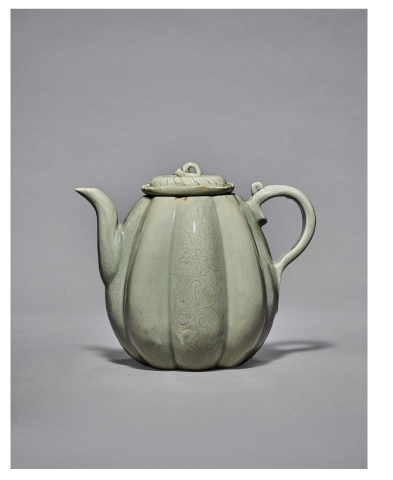Page 413 - japanese and korean art Utterberg Collection Christie's March 22 2022
P. 413
266
A CELADON GLAZED EWER
GORYEO DYNASTY (12TH CENTURY)
The tall ewer modeled as a melont with incised details of scrolling
flowers, applied with s-shaped spout and handle, covered with a glaze
of soft sea-green tone
7¿ in. (18.1 cm.) high
$40,000-50,000
Korea’s best-known ceramics, the celadon wares, were produced
during the Goryeo dynasty (918–1392), an era of supreme artistic
refinement. Vessels with molded, incised, or carved decoration,
such as this exquisite ewer, typify twelfth-century Korean wares,
while ones with designs inlaid in black and white slips epitomize
those of the thirteenth and fourteen centuries. As evinced by
this melon-shaped ewer, Goryeo-period clients favored vessels in
sculptural form, the forms characteristically suggesting bamboo
shoots, lotus blossoms, ripe melons, calabash gourds, and open
blossoms. Korean celadon glazes tend to be more transparent
and also more bluish green than those of contemporaneous
Chinese celadons. The finest Korean celadons rival their Chinese
counterparts in terms of both artistic sophistication and technical
achievement. Virtually identical ewer in the collection of National
Museum of Korea, see Koryo Celadon Masterpieces: National Museum
of Korea 1989, exh. cat. (Seoul: National Museum of Korea, 1989),
no. 32

